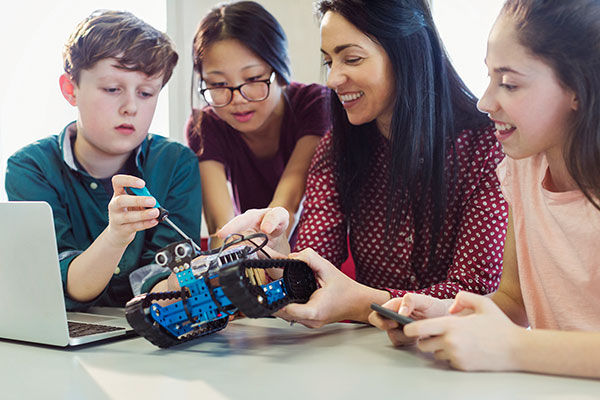6 ways to contribute to schools in your community
(Family Features) In communities across the country, many cities and towns revolve around their local school districts. As education is considered one of the backbones of society, it’s common for community members to seek ways to assist students through school-related programs.
If you’re interested in making a positive impact on your local schools, teachers and students, consider these tips from the America’s Farmers Grow Rural Education program, sponsored by the Monsanto Fund, a philanthropic arm of Bayer:
Donate Supplies
From pens and pencils to computer monitors and other tech devices, schools are seemingly always in need of tools to help students thrive in a hands-on learning environment. Consider donating your gently used items for students to use in the classroom. For example, you may have binders, folders and writing utensils in your home office that could be used in a school setting, or you can even buy new materials at the store and contribute those to students you know personally or to a classroom in need.
Volunteer in the Classroom
If a more direct approach to giving is your preference, lending time and talent to a local school can be another charitable option. Try reading to younger children during your spare time, or to have an impact on older students, speak to classes about your job to provide real-world insight. While it requires more of a time commitment and likely certification in some form, applying to become a substitute teacher is a way to assist both students and teachers in your area.
Nominate Schools for Grants
To better understand the evolving world, some of the more pressing educational areas include science, technology, engineering and math (STEM). You can assist public schools in your area and help provide more STEM opportunities by nominating them for special grants, such as those offered by the America’s Farmers Grow Rural Education program, which has awarded more than $16 million in grants to more than 900 public schools since 2011. From Jan. 1-April 1, 2019, farmers can nominate local public school districts to apply for $10,000 and $25,000 grants.
Past winning programs used funds to improve internet connectivity, develop industrial arts labs and create life science and livestock learning laboratories. Find more information and nominate your local school at AmericasFarmers.com.
Think Outside the Classroom
It’s entirely possible the hours of the school day and your work schedule simply don’t align. Rather than helping inside the classroom, you can assist in after-school programs like sports and other extracurricular activities as a coach or sponsor. Additionally, school projects that require time spent job shadowing are common in middle school and high school, meaning you can volunteer to allow students to gain real-world experience by joining you at your workplace for a predetermined amount of time.
Attend Meetings
School board meetings in many areas occur weekly or monthly and are typically open to the public. If your local school district allows public attendance, consider making regular appearances. While you may not always share your opinion on school board matters, attending can, at the very least, allow you to stay up-to-date with the happenings of the community and keep informed on important topics and potential areas of need.
Encourage Participation
Finding ways to help schools, students and teachers can only go so far with limited assistance from community members. Reach out to others you think may be interested in lending their time and talents, and use social media and other avenues to spread awareness about upcoming events or information you believe need to be amplified.
Schools typically play a large role in community settings, but they’re still almost always in need of help from those who are willing to give it. Giving your time and providing assistance where possible can make a positive impact where it’s oftentimes needed most.

The Importance of STEM Education
One of the most important parts of the education process is preparing students to take on the “real world.” As technology evolves and changes, STEM learning is increasingly becoming a foundation for future life skills.
There are a number of reasons STEM is truly valuable to today’s students, including:
- STEM is where jobs are headed. According to the U.S. Bureau of Labor Statistics, the 10 fastest-growing occupations through 2026 are populated 100 percent by jobs that fall into STEM categories.
- STEM is innovative. Skilled employees in STEM fields are driving trends, which in turn creates additional jobs while boosting the economy.
- STEM is a stepping stone. The list of careers that fall under STEM categories continues expanding. In addition to some of the more apparent careers and jobs, STEM learning can provide experience applicable to many other fields.
- STEM is making a difference. Driving social change through scientific research and technological advancements means STEM is at the forefront of making positive impacts in areas like medicine and engineering.
Funding for local schools is a key component in the STEM learning process. To help advance educational opportunities, consider nominating your local school district for grants like those available from the America’s Farmers Grow Rural Education program, which includes $10,000 and $25,000 grants to fund improvements ranging from greenhouses to laboratory equipment to makerspaces.
Photo courtesy of Getty Images (students working on robot)


